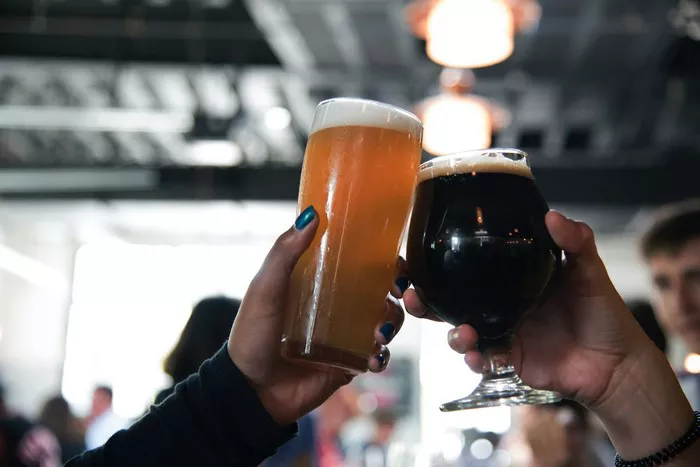Beer fermentation is a meticulous process that demands patience, precision, and understanding. One of the most common questions among brewing enthusiasts is, “How long does it take to ferment beer?” This seemingly simple inquiry encompasses a multitude of variables, each playing a crucial role in determining the duration of the fermentation process. From yeast strains to fermentation temperatures, various factors influence the timeline of beer fermentation.
Understanding the Fermentation Process
Before delving into the specifics of the duration of beer fermentation, it’s essential to comprehend the fermentation process itself. Fermentation is the biological process through which yeast consumes sugars present in the wort, converting them into alcohol and carbon dioxide. This transformation occurs in designated vessels, commonly fermentation tanks or carboys, where yeast interacts with the wort, initiating a series of chemical reactions.
Factors Influencing Fermentation Duration
Numerous factors contribute to the duration of beer fermentation. One primary determinant is the yeast strain used. Different yeast strains exhibit varying fermentation rates and behaviors, impacting the overall timeline. Ale yeasts, for instance, typically ferment beer more rapidly than lager yeasts. Additionally, the initial yeast cell count, yeast health, and pitching temperature can affect fermentation speed.
The composition of the wort is another crucial factor. Wort with higher sugar content may take longer to ferment compared to wort with lower sugar concentrations. Likewise, the presence of additional fermentables, such as adjuncts or specialty sugars, can influence the fermentation time.
Fermentation temperature plays a pivotal role in determining how long it takes to ferment beer. Yeast activity is highly temperature-sensitive; higher temperatures can accelerate fermentation but may produce off-flavors, while lower temperatures can slow down the process. The optimal fermentation temperature varies depending on the yeast strain used, with ale yeasts typically fermenting between 60-75°F (15-24°C) and lager yeasts at cooler temperatures around 45-55°F (7-13°C).
Stages of Beer Fermentation
Beer fermentation occurs in several stages, each contributing to the overall timeline. The initial stage, called the lag phase, involves yeast acclimating to its new environment. This phase can last anywhere from a few hours to a couple of days. During this time, the yeast adapts to the wort and begins reproducing.
The primary fermentation phase follows the lag phase. This is when yeast vigorously consumes sugars, producing alcohol and carbon dioxide. The duration of primary fermentation varies based on factors such as yeast strain, wort composition, and fermentation temperature. Typically, primary fermentation can last between several days to a couple of weeks.
After primary fermentation, some brewers opt for a secondary fermentation stage. While not always necessary, secondary fermentation allows for further maturation and clarification of the beer. This phase can range from a few days to several weeks.
Lastly, conditioning or maturation occurs after fermentation is complete. This stage involves aging the beer to refine flavors and ensure a smooth, balanced taste. Conditioning times vary widely, ranging from a few weeks to several months or even years for certain beer styles like strong ales or sours.
Factors Affecting Fermentation Timeframes
Yeast health and vitality significantly impact the fermentation timeline. Using fresh, viable yeast with high cell counts can expedite fermentation. Proper yeast handling, rehydration (if using dry yeast), and pitching rates are crucial for optimal yeast performance.
The oxygenation of the wort before fermentation can influence yeast activity. Adequate oxygen levels promote healthy yeast growth and fermentation. Insufficient aeration may lead to sluggish fermentation and incomplete attenuation.
Another often overlooked aspect affecting fermentation time is the cleanliness and sanitization of equipment. Contaminants or remnants of cleaning agents can hinder yeast performance and lead to stalled fermentation or off-flavors, prolonging the overall fermentation process.
Monitoring and Adjusting Fermentation
Throughout the fermentation process, monitoring gravity readings using a hydrometer or refractometer is essential. Tracking specific gravity helps determine fermentation progress and when it’s nearing completion. Consistent gravity readings over a few days indicate fermentation completion.
Moreover, maintaining stable fermentation conditions is crucial. Fluctuations in temperature or exposure to light can adversely affect yeast activity and beer quality. Monitoring and adjusting temperature, especially during the initial stages of fermentation, can help control the pace and quality of the process.
Impact of Beer Style on Fermentation Time
Different beer styles have varying fermentation requirements, impacting the time it takes to ferment. For instance, lighter-bodied ales like pale ales or wheat beers often have shorter fermentation times compared to robust styles like imperial stouts or barleywines. Lager styles, known for their crispness and clean flavors, typically undergo longer fermentation periods due to lower fermentation temperatures and slower yeast activity.
Additionally, sour beers or wild ales, which involve mixed fermentations with bacteria and wild yeast strains, can take significantly longer to ferment and mature. These beers often undergo prolonged aging periods to develop complex flavors and acidity.
Conclusion
In conclusion, the duration of beer fermentation is a complex interplay of various factors. From yeast selection and wort composition to fermentation temperature and beer style, numerous elements influence the time it takes for beer to ferment. While a general timeline exists for different stages of fermentation, the actual duration can vary widely based on these factors.
Understanding and manipulating these variables allow brewers to craft beers of exceptional quality, achieving desired flavors and characteristics. By closely monitoring fermentation, maintaining optimal conditions, and adhering to best practices, brewers can navigate the intricacies of fermentation timelines to produce outstanding beers that delight the palate. So, the next time someone asks, “How long does it take to ferment beer?”—remember, it’s a journey influenced by science, skill, and a touch of artistry.


